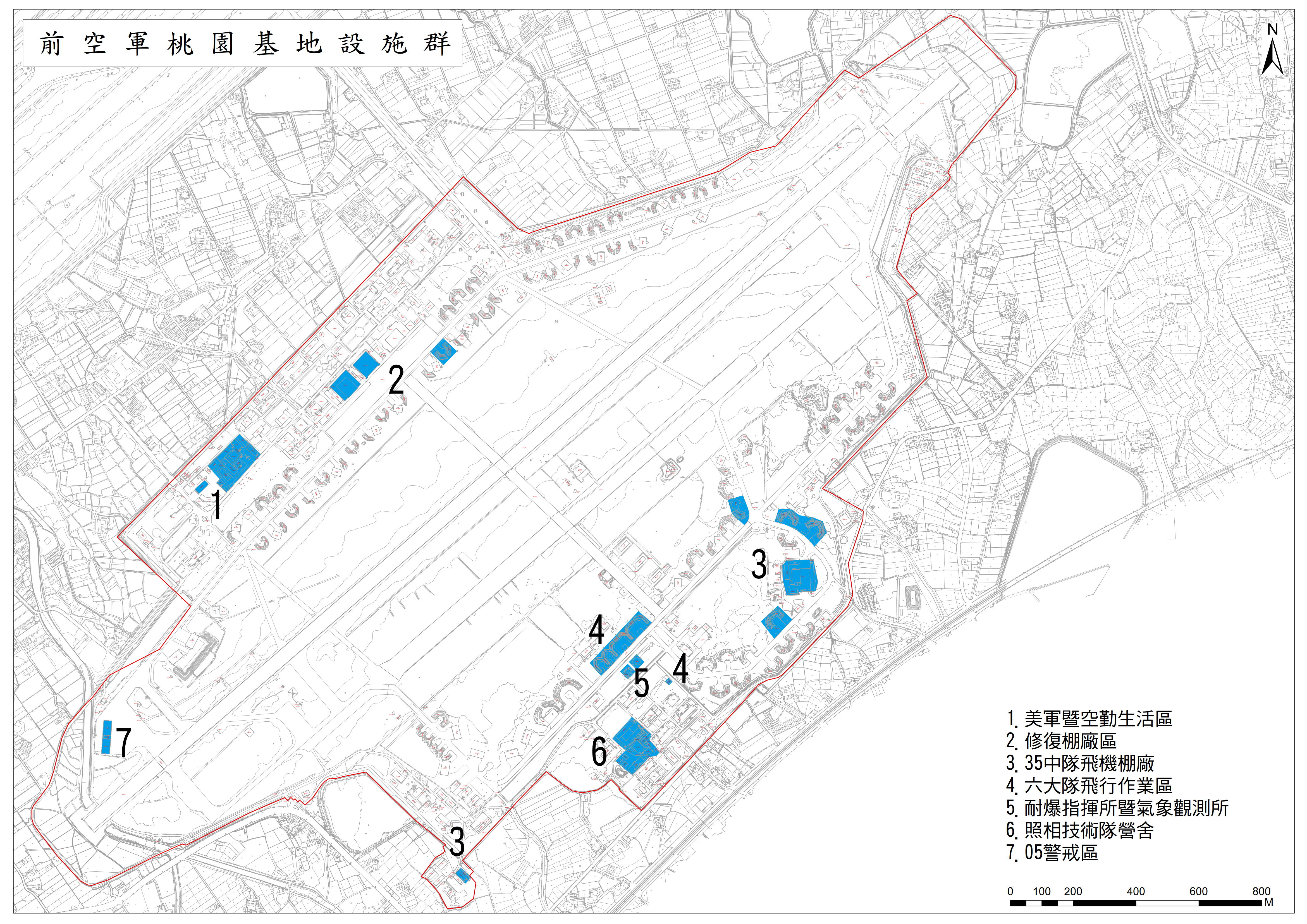「前空軍桃園基地設施群」包含7處設施群,分別為美軍暨空勤生活區、修復棚廠區、35中隊飛機棚廠、六大隊飛行作業區、耐爆指揮所暨氣象觀測所、照相技術隊營區、05警戒區,為國內除役後保存最完整的軍事基地,且是冷戰時期唯一可以深入大陸進行偵照的U2高空偵察機之駐紮基地,見證黑貓中隊在冷戰時期美軍協防臺灣特殊、技術人員交流之歷史過程。
前空軍桃園機場興建於1944年,是日本「第十號作戰準備」下的產物,時稱桃園飛行場,附近民眾則稱之為水斗機場或箍仔內。1945年曾轉作特攻作戰之發進飛行場,並在同年4至5月間進行3次的特攻作戰。日本戰敗後,基地由我方接收。其中耐爆指揮所暨氣象觀測所為基地內少數的日遺設施,極具文化資產價值。
1950年6月25日韓戰爆發,美國開始積極對外展開軍事援助,以阻止共產勢力的擴張。基地內的美軍暨空勤生活區即是當時所建立,供美軍及相關人員使用,周遭尚設有圍牆與衛哨,管制進出人員,我方空軍無法自由進出。
之後美國與我方合作進行「快刀計畫」,以大陸為偵照對象,由美方提供U-2偵察機,我方提供飛行員,並成立35中隊(黑貓中隊)。此中隊原以日治時期舊棚廠區為作業範圍,後來特別興建專屬棚廠(H5棚廠),以進行各項任務作業。從1961年到1974年間,空軍飛行員在此進行多達220次的高空偵察任務,曾偵察到中國第一、二次核彈試爆,為冷戰時期取得相當多重要情資。
U-2偵照所得之拍攝底片,則在照相技術隊營區與增城作業區處理,其內部空間係根據照相調製、判讀、製圖等一貫作業流程來設計,並配有獨立的空調設備、緊急發電機與獨立供水系統。營區戒備森嚴,即使長官或美籍顧問來訪,皆需專人引導換證,始得入內。
此外,由於U-2偵察機為高空偵察機,飛行員必需遵守嚴格管制,加上任務機密之故,所有飛行員執勤前必需先至基地待命,因此,美方另興建隊員專屬宿舍,並為保密而與其他空勤宿舍相隔遙遠。
隨著美國對中共政策逐漸轉向,東亞情勢亦隨之轉變,美軍顧問團在臺的角色逐漸轉為諮詢性質,大批美軍顧問從駐地撤出,此區轉而為我方空勤所使用。另,為衛戍首都,基地跑道兩側皆設有警戒區,其中又以「05警戒區」擔負絕大多數的警戒任務而更顯其重要性。
102年6月部隊全數調遷,軍事重地終卸下任務,轉為歷史文化空間。

.jpg)
.jpg)
.jpg)
.jpg)
.jpg)

.jpg)








